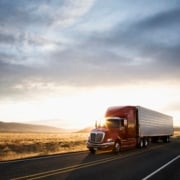The Newest Phase of EPA’s Greenhouse Gas Emissions Standards: Phase 3
On March 29, 2024, the U.S. Environmental Protection Agency (EPA) announced its most recent national greenhouse gas (GHG) pollution standards for heavy-duty (HD) vehicles, including HD vocational vehicles and tractors. The rule establishes new CO2 emission standards for model year (MY) 2032 and later HD vehicles, with more stringent CO2 standards phasing in as early as MY 2027 for certain vehicle categories.
This rule completes the EPA Clean Trucks Plan for reducing GHG emissions and other pollutants, which included i) finalizing new standards for 2027–32 light- and medium-duty vehicles earlier this month, ii) the 2023 heavy-nitrogen-oxide (NOx) final rule, and iii) the third phase of the GHG emissions standards (Phase 3). The Clean Trucks Plan represents the most comprehensive and stringent set of on-road EPA regulations today.
GHG Emissions Standards for Heavy-Duty Vehicles — Phase 3
These Phase 3 GHG emissions standards for HD engines and vehicles are the latest in a series of increasingly stringent federal emissions standards that EPA first adopted in coordination with the National Highway Safety Transportation Administration in the 2011 federal Heavy-Duty GHG Phase 1 regulation. Phase 1 of the regulation set standards for medium- and heavy-duty vehicles MYs 2014–18. Phase 2 covered MYs 2019–27 and set even more stringent GHG emissions reduction targets.
With EPA’s Phase 2 standards set to expire in 2027, development and adoption of the new Phase 3 standards have been looming. In response to the proposed Phase 3 standards, published in April 2023, there were over 175,000 public comments.
Key Differences Between Phase 2 and Phase 3
- Stringency. Phase 3 standards are significantly more stringent, reducing GHG emissions from HD vehicles by 29% below 2021 levels by 2032, while Phase 2 standards reduced emissions by 17% below 2010 levels by 2021. The Phase 3 standards also vary according to vehicle type — divided by light-heavy, medium-heavy, and heavy-heavy vocational trucks, day cabs, and sleeper cab tractors.
- Applicability. Phase 3 standards apply to a wider range of vehicles — now including school buses, delivery trucks, refuse haulers, public utility trucks, transit, and shuttle buses and day and sleeper cabs on tractor-trailer trucks.
- Timeline. Phase 3 standards are phased in over time rather than going into full effect in the first year. The phased-in approach is intended to provide more time in the early model years of the program for the development of vehicle technologies and deployment of charging and refueling infrastructure.
- Technology. Phase 3 standards rely on a wider range of technologies. While Phase 2 standards primarily relied on the use of advanced diesel and internal combustion engine vehicles, the range of available technologies for Phase 3 includes hybrid vehicles, plug-in hybrid electric vehicles, battery electric vehicles, and hydrogen fuel cell vehicles. Each manufacturer may choose the emissions control technologies, provided it can meet the mandated standards.
- Cost. Phase 3 standards are estimated to be costly, with EPA forecasting the annual cost for the industry to comply with the rule at $1.1 billion, particularly given the current state of the industry in developing the technology necessary to comply with the new standards — although EPA contends the program will yield greater fuel cost and maintenance savings over time.
Looking Around and Ahead
While the push for lowering GHG emissions, specifically in the trucking and transportation sector, has been a priority from the Biden administration, the new standards face pushback from trucking industry members and manufacturers. For instance, some say that the standards are too much too soon given the current state of zero-emission technology, the lack of charging infrastructure, and restrictions on the power grid.
The Phase 3 standards also fall against the backdrop of the California Air Resources Board’s own Omnibus Regulation emissions standards, which seek to dramatically reduce particulate matter and NOx levels for HD vehicles, along with its Advanced Clean Truck rule, which EPA approved last year and requires manufacturers to phase out most gasoline-powered HD vehicles by 2035.
Given the increased stringency, the new regulation will likely face challenges from industry participants. However, the rule is just one part of the Biden administration’s campaign to electrify the transportation center and reduce GHG emissions across the country. Members of the trucking and transportation industries should continue to watch these developments closely.
This post is as of the posting date stated above. Sidley Austin LLP assumes no duty to update this post or post about any subsequent developments having a bearing on this post.



